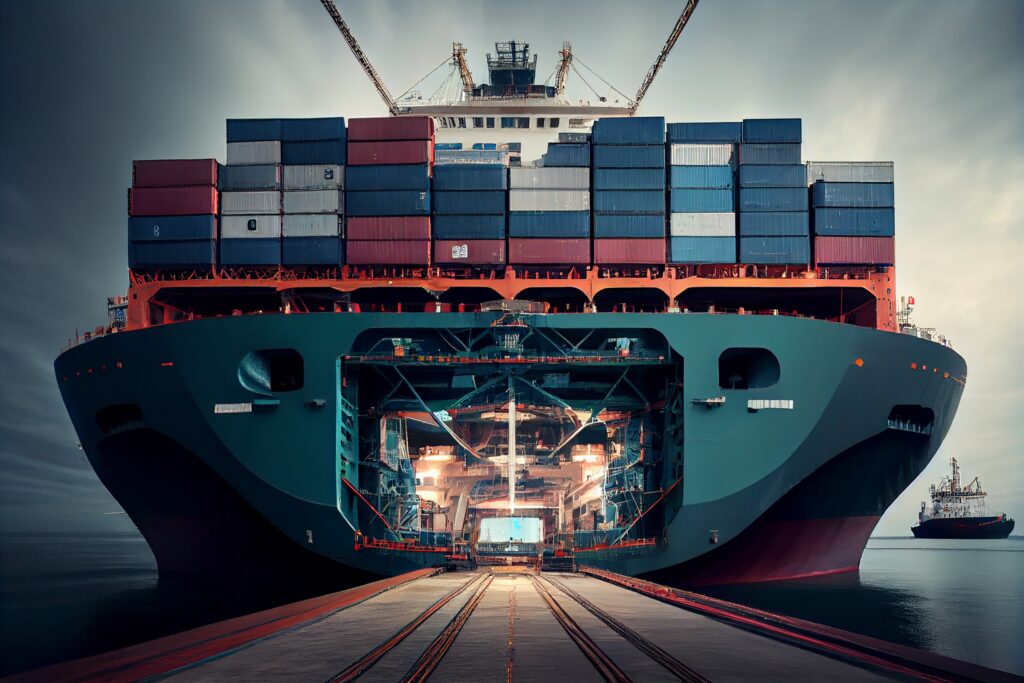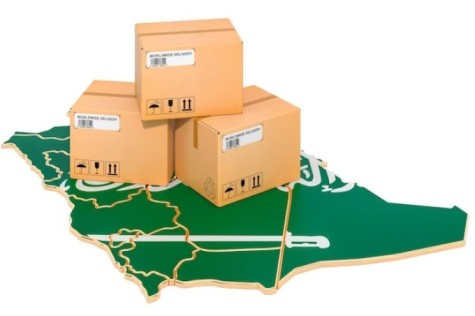Logistics corporations have profited from increased demand for freight and commodities due to the continuing growth of online business, even as COVID-19 continues to disrupt the industry worldwide. The global logistics business expected to grow to more than 10 trillion euros by 2022. That year, maritime freight estimated to exceed 66 million TEUs, with a steady increase predicted over the next five years. However, logistics service providers have encountered substantial problems due to supply chain delays and increased ocean freight rates.
Major Logistics centers in the GCC
The Middle East and North Africa region’s share of global freight forwarding fell in 2021 because of the COVID-19 epidemic, after exceeding 8% in 2019. The nations that make up the Gulf Cooperation Council (GCC) rely heavily on maritime freight as part of their transportation and logistics industries. It has continuously developed to reduce the technology and infrastructure gap with other major seaport centers. The area is investing in warehouse automation technology, with the market expected to increase to 1.6 billion US dollars by 2025.

Sea freight is the main logistics and transportation means of delivery for the GCC countries. It primarily utilized to export the region’s oil and gas products. The region’s major seaport hubs are off Saudi Arabia’s coast, Abu Dhabi’s emirate in the United Arab Emirates (UAE), and Kuwait. Ras Al Khair Industrial Port is Saudi Arabia’s largest port by land area, whereas Jeddah Islamic Port has the most loaded containers among the Kingdom’s ports. On the other hand, the UAE’s logistics business predicted to grow to more than $30 billion by 2026. In 2021, the volume of aviation freight handled at Dubai International Airport topped two billion tons. Air freight transport in the UAE forecast to increase between 2022 and 2028 by six million tons-km continuously.
*Source – Statista
GCC Warehousing and Distribution
The GCC Warehousing and Distribution Logistics Market is estimated to develop substantially, reaching USD 15.80 billion in 2024 and USD 22.72 billion by 2029, indicating a compound annual growth rate (CAGR) of 7.54% for the forecast period (2024-2029).
Drivers of Increased Warehousing Demand

Increased demand for warehousing in GCC nations is primarily attributed to substantial investments by companies in inventory storage, propelled by the flourishing e-commerce sector. Moreover, advancements in technology are further fueling market expansion.
Factors Contributing to Market Growth
The region’s warehousing and distribution logistics sector poised for substantial Development, bolstered by the expansion of warehousing infrastructure and both government and private investments aimed at establishing the GCC as a robust logistics hub with favorable regulatory frameworks.
Key Growth Factors in Specific GCC Countries
Among GCC countries, the UAE stands out as one of the fastest-growing, fueled by Dubai’s increasing prominence in global trade and its optimistic economic outlook. Bahrain offers notably low setup and operational costs for logistics businesses, providing significant cost savings compared to other GCC nations, which has enticed numerous companies to invest in the country to access the broader GCC and Arab markets.
The Resilience of Saudi Warehousing

Despite economic challenges induced by the COVID-19 pandemic, Saudi Arabia’s warehousing sector has remained resilient, buoyed by the surge in e-commerce and large-scale projects, which have driven demand for expansive storage facilities. Anticipated growth in warehousing demand in the coming years attributed to population growth and ambitious projects aligned with Saudi Vision 2030.
Key Logistics and Warehousing Hubs in Saudi Arabia
Key logistics and warehousing hubs in Saudi Arabia include Riyadh, Jeddah-King Abdullah Economic City (KAEC), and Dammam-Al Khobar, collectively offering a supply of 72 million square meters.
Rising Interest in Warehouse Automation
Interest in established warehouse automation systems for tasks like picking, packing, sorting, and transporting within facilities is on the rise. To fully leverage the benefits of automation, end-users are increasingly exploring integration options with warehouse software platforms such as warehouse management and warehouse control systems (WCS).
Conclusion
Substantial growth poised for the GCC Warehousing and Distribution Logistics Market, driven by factors such as increased demand due to e-commerce expansion, advancements in technology, and significant investments infrastructure. Despite economic challenges, countries like the UAE, Bahrain, and Saudi Arabia remain resilient, offering lucrative opportunities for investors. With strategic hubs like Riyadh, Jeddah-King Abdullah Economic City (KAEC), and Dammam-Al Khobar, the region well-positioned to become a robust logistics hub. Furthermore, the rising interest in warehouse automation reflects a shift towards efficiency and optimization within the industry.
Remember, our team is here to support you throughout the trial period. Feel free to reach out if you have any questions or need assistance.
That’s All. For more information mail us at info@lcsbridge.comFollow us on Twitter, LinkedIn, Instagram, Facebook
Bridge LCS Video Tutorial

